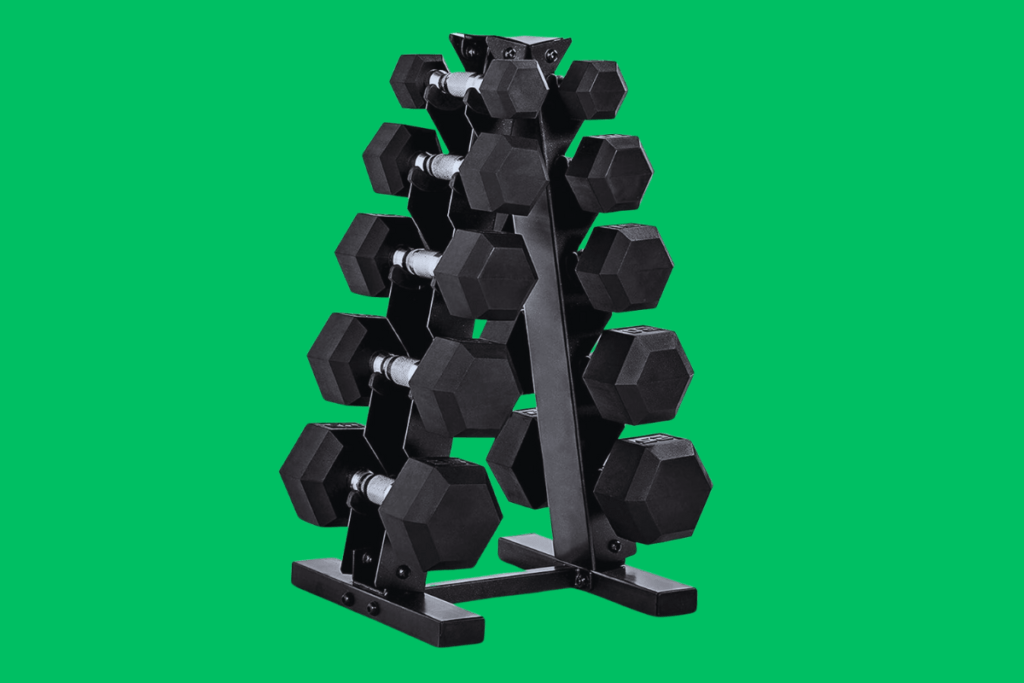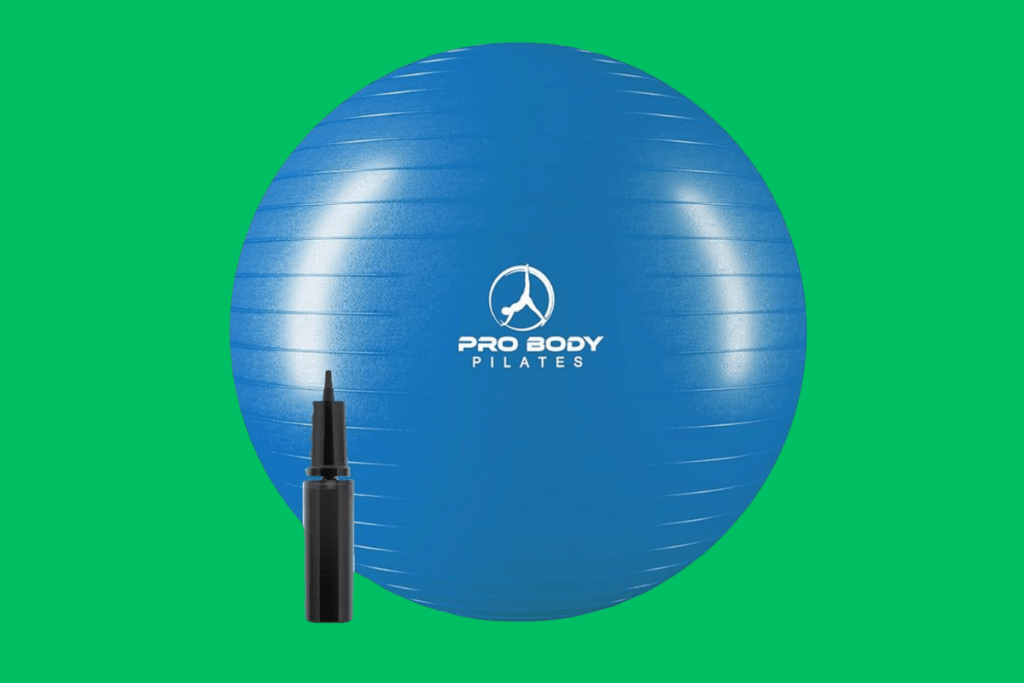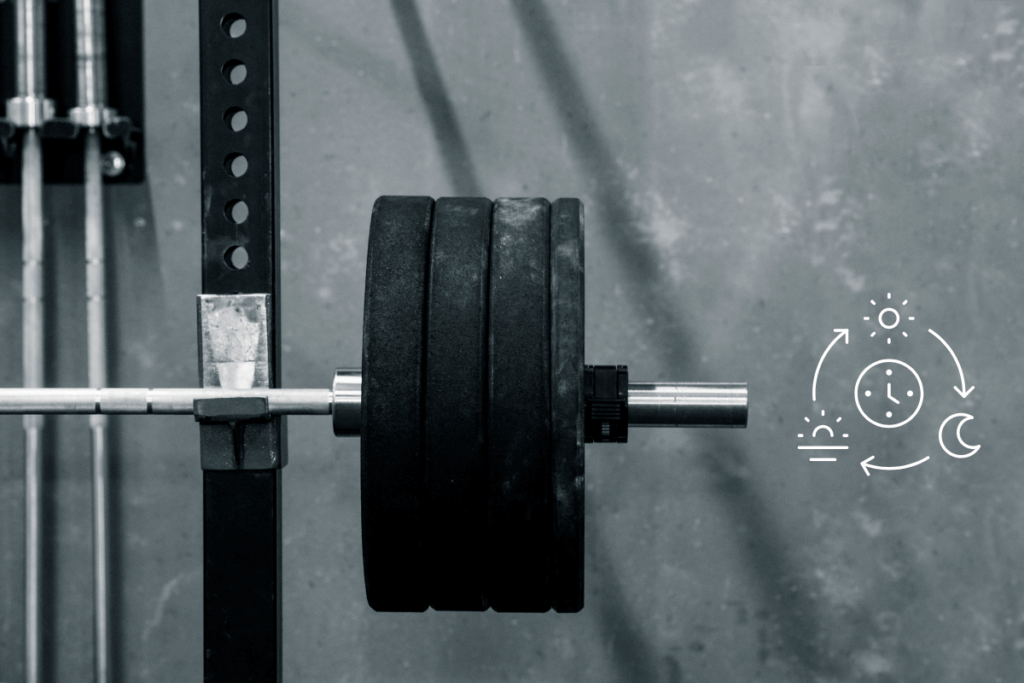A Complete Guide to Functional Strength Training at Home Gym.
Functional strength training is one powerful motivator for getting stronger and having a better body. However many individuals think going to the gym is expensive, unwelcoming, or inconvenient. The good news is that you don’t need an expensive gym membership to accomplish your fitness goals. At-home strength training is a terrific, flexible, convenient, and surprisingly effective choice.
This extensive guide will give you all the information you need to begin your at-home strength training journey. You can keep challenging and improve some important subjects like goal-setting, choosing exercises, planning a training program, proper form, and even progressing.
Why Functional Strength Training Matters
Strength training has other advantages besides just helping you get huge biceps. It offers several benefits to people of different ages and levels of fitness. Here are some strong justifications for adding home gym strength training for weight loss into your routine:
Increased Muscle Mass: Muscle burns more calories at rest. They boost your metabolism and help with weight management.
Improved Bone Density: Functional Strength Training helps the bone in density. It will reduce the risk of osteoporosis.
Enhanced Strength and Stamina: Daily activities will become easier for you. And you’ll have more energy for the things you love.
Reduced Risk of Injury: Strong muscles and connective tissues provide better support for your joints, lowering your injury risk.
Improved Mental Wellbeing: Strength training has been shown to reduce stress, anxiety, and symptoms of depression.
Setting SMART Goals
Before diving into the functional strength training workouts, take a moment to define your goals. SMART goals are specific, measurable, achievable, relevant, and time-bound.
Specific: Don’t just say, “Get stronger.” Instead, aim to “squat 50 lbs for 3 sets of 8 repetitions by the end of 3 months.”
Measurable: Track your progress! Use a weightlifting app. Note down reps and sets or take progress photos.
Achievable: Be realistic. Start with achievable goals and gradually increase difficulty as you progress.
Relevant: Ensure your goals align with your overall fitness aspirations.
Time-bound: Set a timeframe to achieve your goals, keeping yourself motivated.
Getting Ready for Your Home Gym (or Not)
Functional strength training exercises have special benefits. You don’t necessarily require specialized equipment to begin. Your body weight provides adequate resistance during simple exercises. However, as you get better, you might consider adding the following tools to your home gym strength training for weight loss.

Dumbbells: A flexible choice for a range of exercises for the upper and lower bodies. As you gain strength, increase the weight from light to heavier.

Resistance bands: Give adjustable pressure and are appropriate for all kinds of workouts.

Stability ball: It is great for core strengthening and balance exercises.

Training is a method, not an end in itself. Enjoy the process, be proud of your achievements, and embrace the long-term benefits of a strong, fit body.
Bench: A sturdy bench allows so many exercises. Such dumbbell rows and chest presses.
Never forget that you can use common household items. Such as water bottles or packed bags as temporary weights!
Making Your Workout Plan
Now for the fun part—building your workout routine! Here are some key considerations:
Frequency: Aim for 2-3 functional strength training sessions per week, allowing rest days for muscle recovery.
Focus: Design your workouts to target all major muscle groups – upper body (chest, back, shoulders, arms), core, and lower body (legs, glutes).
Sets and Repetitions: Beginners can start with 1-2 sets of 8-12 repetitions per exercise. As you get stronger, increase sets or repetitions.
Rest: Take short rest periods (30-60 seconds) between sets to maintain intensity. Longer rest is needed for heavier weights.
There is an example of a bodyweight-only full-body exercise program:
Warm-up (five to ten minutes): Dynamic stretches (arm circles, leg swings), light cardio (jumping jacks, running in place).
Exercise:
Squats: three sets of ten to twelve reps
Push-ups: 3 sets of 8–12 repetitions (if necessary adjusted on the knees)
Plank: 3 sets of holds lasting 30 to 60 seconds; • Lunges: 3 sets of 10 repetitions per leg
Using a solid chair, perform three sets of 10–12 repetitions for rows.
3. Wall Sits: 3 sets of holds lasting 30 to 60 seconds
5–10 minutes of cool-down: static stretches, holding each pose for 15–30 seconds.
Proper form is crucial to prevent injuries and maximize results.
There are some broad form guidelines:
Form Mastery: The Secret to Success (continued)Keep your shoulders back and down, and your back straight. And your core is active to maintain proper posture.
Maintain control over the weight: Pay attention to control over momentum when raising and reducing the weight by training strength exercises.
Full range of motion: Without compromising correct form, strive for a full range of motion during each exercise.
Pay attention to your body: If you experience pain, stop. Releasing yourself is preferable to injuring yourself.
Progress: Sustaining the Challenge
It’s essential to increase the difficulty of your workouts as you gain strength to keep pushing your muscles and encouraging growth.
Here are several methods for moving forward:
Increase weight: When performing weighted exercises, progressively add more weight to your resistance bands or dumbbells.
Increase repetitions/sets: After completing the suggested number of reps and sets without discomfort, go up to one or two more repetitions or sets for each exercise.
Shorten rest intervals: Reduce the rest time between sets to make your workout more intense.
Advanced workout variations: After you become proficient in the fundamentals, try out more difficult versions that work the same muscle groups.
First Safety:
Pay Attention to Your Body Even while functional strength training has many advantages, safety should always come first. The following safety advice is provided:
Warm-up and cool-down: To avoid injuries, always warm up before working out and cool down afterward.
Take care of your body: It’s acceptable to take rest days and not push yourself too hard. Ignoring discomfort can result in harm.
Use the correct form: Use the correct form to avoid injuries and get the best outcomes.
Consider seeing a physician: Before beginning a new fitness regimen, find out from your doctor about any pre-existing medical concerns.
Build a Sustainable Habit
The secret to reaching your fitness objectives is consistency. The following advice can help your at-home functional strength training regimen become a long-lasting habit:
- Establish a fitness regimen that suits your needs: Follow the same routine every day, whether it’s in the morning, the afternoon, or the evening.
- Celebrate your accomplishments and set reasonable goals: Reaching minor objectives helps you stay motivated.
- Have fun with it! To make things fun, try new workouts, locate a workout partner, or play some music.
Observing your advancements might serve as a powerful source of inspiration. - Treat yourself: Reward yourself for your accomplishments without using food.
Advanced Training Guide for Beginners
For those interested in taking their at-home strength training to the next level, this section dives deeper into some advanced concepts.
Advanced Methods of Training
When you reach a plateau with bodyweight or low-impact exercises after mastering the fundamentals, think about introducing some advanced training methods to push your muscles even harder. Here are a few instances:
- Supersets: Focus on opposing muscle groups by performing two exercises back-to-back with little to no rest (e.g., push-ups followed by rows).
- Drop sets: Finish an exercise set using a given weight, then instantly lower the weight and continue until you reach your limit.
- Pre-exhaustion: Before engaging in a compound exercise that targets the same muscle group, target a particular muscle area with an isolation exercise (e.g., dumbbell flies before bench press).
Periodization: Planning for Progress
Periodization involves structuring your workouts in phases to optimize results and prevent plateaus. Here’s a simplified example:
- Hypertrophy Phase: Focuses on building muscle mass. Higher volume workouts with moderate weight (8-12 repetitions per set).
- Strength Phase: Aims to increase strength. Lower volume workouts with heavier weight (1-6 repetitions per set).
- Deload Phase: Reduced training volume and intensity to allow for recovery.
Safety Considerations for Advanced Training
Advanced training techniques and heavier weights require extra focus on safety:
- Warm up thoroughly: Even more crucial with advanced routines to prepare your muscles and joints for intense training.
- Use a spotter: If lifting heavy weights, having a spotter to assist and ensure safety is highly recommended.
- Mind the ego: Don’t lift weights that are too heavy for you to maintain proper form.
- Pay attention to progressive overload: Gradually increase weight or difficulty, but prioritize proper form over ego-lifting.
Nutrition and Recovery for Functional Strength Training
Nutrition plays a very important role in muscle building and recovery. Here are some key points:
- Protein: Consume enough protein (around 0.8–1 gram per pound of body weight) to support muscle growth and repair.
- Carbs: Include complex carbohydrates in your diet to provide energy for your workouts.
- Healthy fats: Don’t skimp on healthy fats, which are essential for hormone regulation and overall health.
- Micronutrients: Ensure you’re getting enough vitamins and minerals to support overall health and recovery.
- Hydration: Stay hydrated throughout the day to optimize muscle function and recovery.
- Post-workout meal: Consume a protein- and carbohydrate-rich meal within 30-60 minutes after your workout to support muscle recovery.
Staying Motivated in the Long Term
Maintaining motivation is key to long-term success. Here are some tips:
- Find a workout buddy: Having someone to train with can boost accountability and make workouts more enjoyable.
- Track your progress: Seeing your improvements is a powerful motivator. Use a workout log or app to track your reps, sets, and weights.
- Set new challenges: Regularly introduce new exercises or variations to keep things interesting.
- Reward yourself: Celebrate your milestones with non-food rewards.
- Focus on the positive: Remember how good you feel after a workout and the progress you’re making.
- Find inspiration: Read fitness magazines, follow motivational fitness accounts online, or watch inspiring workout videos.
More Tipsandtrics:
- Focus on nutrition: Eating a healthy diet provides your body with the nutrients it needs to build muscle and recover from workouts.
- Stay hydrated: Drink plenty of water before, during, and after your workouts to stay hydrated and support muscle function.
- Get enough sleep: Aim for 7-8 hours of sleep per night to allow your body to recover and rebuild muscle tissue.
- Don’t be afraid to ask for help: If you’re unsure about an exercise or proper form, consult a certified personal trainer for guidance.
Finally, Constructing a Robust and Durable
Home gyms allow you to take charge of your health and fitness. You can perform your strength training with dedication, sensible preparation, and safety. You could build a robust and healthy body in the comfort of your own home if you were consistent. So let’s start right now! Embrace your functional strength training journey, celebrate your successes, and savor the long-term benefits of functional strength training.
Remember that strength training is a method, not an end in itself. Enjoy the process, be proud of your achievements, and embrace the long-term benefits of a strong, fit body.
Stay motivated and informed—subscribe to our newsletter for expert tips, home gym insights, and fitness inspiration.











53 Comments
amoxicillin drug – cost amoxil amoxicillin where to buy
buy amoxicillin without prescription – order amoxicillin online purchase amoxil sale
forcan canada – https://gpdifluca.com/# buy diflucan 100mg pills
buy diflucan generic – this buy fluconazole 100mg generic
cost escitalopram – https://escitapro.com/ lexapro 10mg cheap
buy cenforce no prescription – brand cenforce buy cenforce pills
buy cenforce 100mg online cheap – https://cenforcers.com/ buy cenforce pills
cialis with dapoxetine 60mg – vardenafil tadalafil sildenafil best price on generic tadalafil
us cialis online pharmacy – ciltad generic great white peptides tadalafil
what happens if a woman takes cialis – https://strongtadafl.com/# cheap cialis by post
which is better cialis or levitra – https://strongtadafl.com/# buying cialis generic
buy generic zantac 150mg – order zantac 300mg sale buy ranitidine 300mg for sale
cheap viagra birmingham – click best place buy viagra online uk
viagra 50mg cost – click cheap viagra online canada
I couldn’t weather commenting. Warmly written! buy prednisone pills
This website really has all of the bumf and facts I needed adjacent to this case and didn’t know who to ask. comprar clomid sin receta
This is the type of delivery I turn up helpful. este sitio
The thoroughness in this draft is noteworthy. cheap neurontin 800mg
Thanks on putting this up. It’s well done. https://ursxdol.com/get-cialis-professional/
Thanks towards putting this up. It’s evidently done. https://prohnrg.com/product/omeprazole-20-mg/
This website positively has all of the tidings and facts I needed about this subject and didn’t identify who to ask. https://ursxdol.com/clomid-for-sale-50-mg/
The sagacity in this serving is exceptional. https://prohnrg.com/product/omeprazole-20-mg/
This is the stripe of serenity I get high on reading. https://aranitidine.com/fr/acheter-cialis-5mg/
The thoroughness in this section is noteworthy. acheter kamagra pas cher
More articles like this would pretence of the blogosphere richer. https://ondactone.com/product/domperidone/
This website absolutely has all of the tidings and facts I needed about this thesis and didn’t know who to ask. https://ondactone.com/simvastatin/
This is a keynote which is near to my heart… Many thanks! Exactly where can I upon the phone details for questions?
buy levaquin generic
This website really has all of the information and facts I needed there this subject and didn’t comprehend who to ask.
spironolactone canada
I couldn’t resist commenting. Adequately written! http://www.fujiapuerbbs.com/home.php?mod=space&uid=3616674
This website absolutely has all of the information and facts I needed about this subject and didn’t identify who to ask. http://www.underworldralinwood.ca/forums/member.php?action=profile&uid=488147
order forxiga without prescription – forxiga buy online generic dapagliflozin 10 mg
xenical online order – click orlistat cost
orlistat over the counter – xenical buy online xenical over the counter
This is the kind of scribble literary works I truly appreciate. http://pokemonforever.com/User-Enlxaj
Thanks for sharing. It’s first quality. http://www.predictive-datascience.com/forum/member.php?action=profile&uid=46018
You can shelter yourself and your family by being heedful when buying prescription online. Some pharmaceutics websites function legally and sell convenience, privacy, cost savings and safeguards to purchasing medicines. buy in TerbinaPharmacy https://terbinafines.com/product/pyridium.html pyridium
You can protect yourself and your ancestors nearby being wary when buying prescription online. Some pharmacopoeia websites manipulate legally and put forward convenience, solitariness, bring in savings and safeguards to purchasing medicines. buy in TerbinaPharmacy https://terbinafines.com/product/imitrex.html imitrex
Thanks on putting this up. It’s well done. TerbinaPharmacy
This is the amicable of glad I enjoy reading. TerbinaPharmacy
I am in truth thrilled to glance at this blog posts which consists of tons of profitable facts, thanks towards providing such data.
Thanks towards putting this up. It’s okay done.
Wenn ihr vom Handy oder Tablet spielen wollt und nicht nur am Desktop Computer sitzen möchtet, geht das mobile Spielen bei Cadoola einfach und sicher. Das tut der Cadoola Online Casino Bonus und dieses auch noch bei fairen Bonusbedingungen und 250 Freispielen zum besten Einstieg in den Spielort. Das Cadoola Online Casino bietet eine enorme Spielauswahl von besten Software Unternehmen, einen guten Kundensupport, mobiles Spielen und viele Optionen bei den Zahlungsmethoden. Die Spielauswahl ist mit mehr als 5.000 Spielen, inklusive Live Casino, klassischen Tischspielen und progressiven Jackpots sehr gut. Die Einzahlung ist schnell und direkt nach dem Deposit könnt ihr losspielen.
Spezielle deutsche Live-Tische bieten Oktoberfest-Roulette im September, Weihnachts-Blackjack im Dezember und andere saisonale Variationen. HD-Übertragungen mit 4K-Option bieten perfekte Bildqualität über deutsche Internetverbindungen. Amerikanisches Roulette bleibt verfügbar für Abwechslung, während französisches Roulette mit La Partage-Regel die niedrigste Hausbank bietet. Europäisches Roulette dominiert mit 15 verschiedenen Varianten, da deutsche Spieler die besseren Gewinnchancen der Einzelnull-Version bevorzugen.
References:
https://online-spielhallen.de/umfassender-leitfaden-zum-vegaz-casino-cashback/
Sämtliche Aktivitäten auf Gametwist werden mit XP-Points belohnt. Gametwist verfügt über ein Treueprogramm, die sogenannten XP-Points – kurz für Experience-Points, also Erfahrungspunkte. Zum Start ins Gametwist-Abenteuer bekommt jeder neue Nutzer 3.000 Twists auf sein Spielerkonto gutgeschrieben. Die Twists ersetzen bei Gametwist das Echtgeld und gelten für jedes Spiel innerhalb der Plattform. Dann ist Gametwist genau das Richtige für dich – echtes Casino-Feeling zum reinen Vergnügen, ganz ohne Risiko.
GameTwist ist eine Plattform für kostenloses Online-Glücksspiel, die ausschließlich Unterhaltungszwecken dient. Und wenn du dir zusätzlich zu deinen Boni Twist-Pakete für Book of Ra, Sizzling Hot & Co. gönnst, wirst du VIP. Warum dieser nostalgische Glückspiel so viele Fans hat? Werde jetzt Teil unserer Casino Community und profitiere von regelmäßigen Slot Bonus-Chancen, Turnieren oder Casino Spielautomaten Gewinn-Aktionen! Man kann an vielen speziellen Aktionen oder Promotions teilnehmen, ohne sofort eine erste Einzahlung tätigen zu müssen! Vielleicht ist dir beispielsweise der Novoline Automat Sizzling Hot ein Begriff, oder Fruits’n Sevens, ein Spiel, in dem man mit etwas Glück den Jackpot knacken kann!
In Faust ist es als Spieler deine Aufgabe, 5 gleiche Symbole direkt nebeneinander – also ohne Unterbrechung durch andere Symbole – auf einer der Gewinnlinien zu erspielen. Auch GameTwist bietet zahlreiche Varianten dieser eleganten Tischspiele an, und das dank der vielen Twist-Boni oftmals sogar gratis. Wer mit dem Mobilgerät spielen möchte, muss nicht zwingend eine App herunterladen. Es gibt verschiedene Pakete zu guten Konditionen, sodass das Spielen von Slots und Karten- und Tischspielen problemlos möglich ist.
References:
https://online-spielhallen.de/boomerang-casino-erfahrungen-mein-umfassender-bericht/
At RocketPlay, we pride ourselves on offering a premium online casino experience tailored specifically for Aussie players. With our extensive selection of casino games, exclusive bonuses, and secure payment options, RocketPlay has established itself as one of the top Australian online casinos in 2025. Welcome to RocketPlay, where Aussie players can enjoy the ultimate online casino experience. With an extensive library of over 3,000 games, including slots, table games, and live dealer options, players are sure to find something that suits their preferences.
Rocketplay might ask for ID and address proof later during withdrawals, so it’s better to sort it out upfront. Before making your first deposit, it’s smart to verify your identity early. Getting started at Rocketplay takes just a few minutes. Rocketplay also runs well across all devices in Australia, with zero restrictions on access. The support team’s available 24/7 through live chat. Depositing and playing in AUD means no random currency conversion fees or weird exchange rates.
References:
https://blackcoin.co/hotel-cecil-casino-in-depth-review/
The team is responsive, friendly, and dedicated to helping you have the best gaming experience possible. It’s user-friendly, fast, and lets you enjoy your favorite games anytime, anywhere. Would you like to find out what bonuses are available? If you understand you cannot meet all these requirements in time, you can refuse to get a particular bonus. But when you win money with this extra cash, you cannot withdraw this sum instantly.
The fiery theme, the sizzling bonuses, and the hot VIP program – it’s a unique gaming experience that’s hard to find elsewhere. Taking part in a generous promotion program, you can get extra funds on your casino balance and free spins to play on certain slot machines with no money risks. Make your gambling experience even more enjoyable with bonuses by Hell Spin. This online casino is a fiery playground for those who dare to spin the wheel of fortune.
References:
https://blackcoin.co/casino-basics/
Visual Studio Ultimate 2010 also includes a historical debugger for managed code called IntelliTrace. Visual Studio Ultimate 2010 also includes Test Impact Analysis which provides hints on which test cases are impacted by modifications to the source code, without actually running the test cases. The Visual Studio 2010 code editor now highlights references; whenever a symbol is selected, all other usages of the symbol are highlighted. On April 12, 2010, Microsoft released Visual Studio 2010, codenamed Dev10, and .NET Framework 4.
If you’re unsure of how wagering requirements work, check jump straight down to our wagering calculator! They’re typically smaller than a bonus you get upon deposit, but who doesn’t like a free token? On some sites with this promotion, you will get the no deposit bonus when you register as a new bettor. If you enjoy placing big bets, high-roller bonuses are designed for you.
References:
https://blackcoin.co/no-deposit-free-spins-bonuses-2025/
You can always check the RTP in the Zoome casino info panel of each game before you play. These allow players to control how much they spend over a daily, weekly, or monthly period. Self-exclusion tools are available for players who feel the need to take a break. Zoome Casino recommends that players avoid using shared passwords and change login credentials regularly. The platform uses 256-bit SSL encryption to secure all transactions, including deposits, withdrawals, and login sessions.
Zoome Casino is a leader in the Australian online gaming market because it always tries to innovate and provide a high-quality experience. Whether you’re a beginner or an experienced player, Zoome Casino has something to offer. The platform runs smoothly on both iOS and Android devices, providing access to all essential features, including games, payments, and customer service. Advanced SSL encryption technology protects user data and transactions, providing a safe environment for all players.
References:
https://blackcoin.co/level-up-casino-login-guide/
online roulette paypal
References:
https://jobcopeu.com/employer/australian-online-casinos-that-accept-paypal-2025/
paypal casino online
References:
https://skillnaukri.com/employer/online-casinos-that-accept-paypal-usa-high-5-casinos/
online casino mit paypal einzahlung
References:
https://realestate.kctech.com.np/profile/briannamorrill
gamble online with paypal
References:
https://atpo.ca/employer/online-roulette-paypal/
online casino paypal
References:
https://www.revedesign.co.kr/bbs/board.php?bo_table=free&wr_id=320694
online casino accepts paypal us
References:
https://healthjobslounge.com/employer/safe-online-casinos-australia-2025-most-trusted-au-casino-sites/